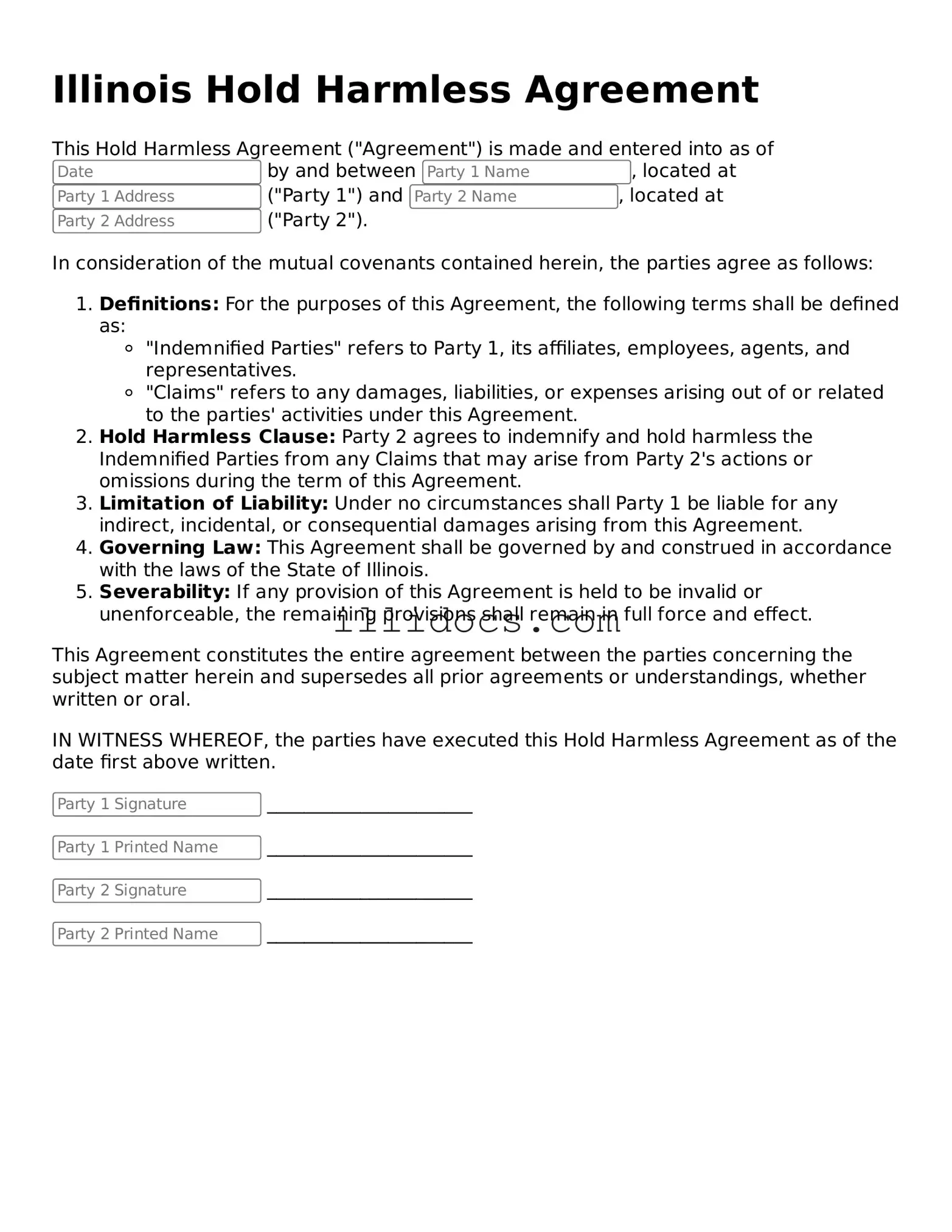What is an Illinois Hold Harmless Agreement?
A Hold Harmless Agreement is a legal document designed to protect one party from liability or claims resulting from the actions or negligence of another party. In Illinois, this agreement is often used in various contexts, such as construction contracts, rental agreements, or event planning. Essentially, it ensures that if one party faces a lawsuit or claims due to the actions of another, the responsible party agrees to take on the financial burden, thereby shielding the other from potential legal troubles.
Who typically uses a Hold Harmless Agreement in Illinois?
Various individuals and organizations utilize Hold Harmless Agreements. For instance, contractors may require them from subcontractors to mitigate risks associated with construction projects. Similarly, event organizers might ask vendors or participants to sign one to avoid liability for accidents occurring during an event. Property owners often use these agreements when renting out their spaces, ensuring they are not held liable for injuries or damages that occur on their property.
Are there any limitations to a Hold Harmless Agreement?
While Hold Harmless Agreements provide significant protection, they do have limitations. For example, they cannot protect a party from liability arising from their own gross negligence or willful misconduct. Courts in Illinois may also scrutinize the language used in these agreements. If the terms are deemed overly broad or ambiguous, they may not be enforceable. Therefore, it’s crucial to draft the agreement carefully, ensuring clarity and fairness for all parties involved.
How can I create a Hold Harmless Agreement in Illinois?
Creating a Hold Harmless Agreement involves several key steps. First, identify the parties involved and clearly outline the scope of the agreement. Specify what liabilities are being waived and under what circumstances. It is advisable to consult with a legal professional to ensure that the agreement complies with Illinois laws and adequately protects your interests. Once drafted, both parties should review the document, make necessary adjustments, and sign it to make it legally binding.
